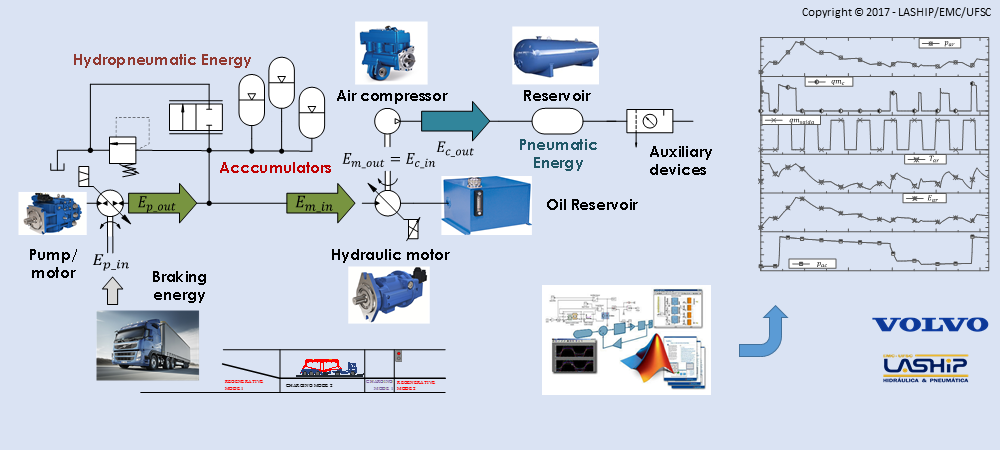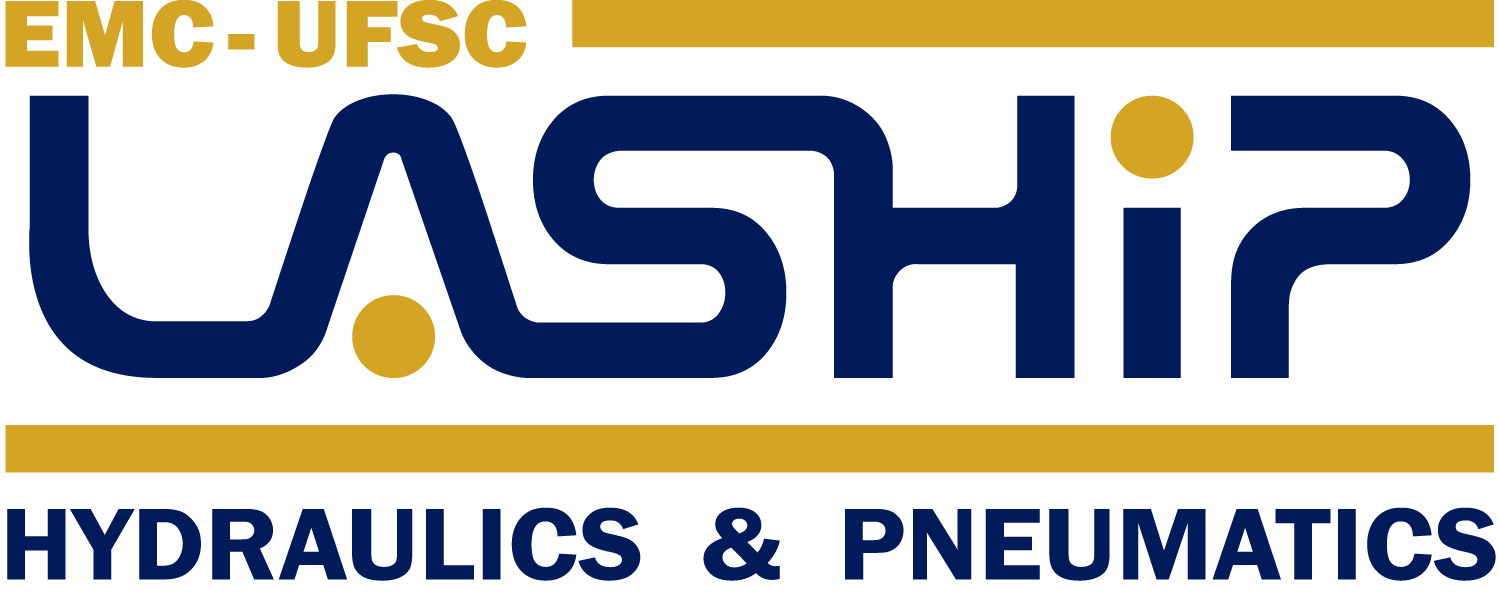Candidate: Rafael Rivelino da Silva Bravo
Program: UFSC / POSMEC
Date: February, 2017
Advisor: Victor Juliano De Negri
Co-Advisor: Amir Antônio Martins de Oliveira Junior
Abstract: In this thesis is presented a new concept of hybrid system for commercial vehicles. The proposed system consists of a hydraulic system integrated with a pneumatic system, which enables the energy of braking of medium and heavy vehicles to be transformed into useful potential energy stored in the form of compressed gas. Unlike current hybrid-hydraulic solutions, which are intended for applications in urban traffic, the hybrid vehicle presented herein adds the capacity to recover the energy available during the periods of courses on downhill runways. The amount of energy recovered can exceed by more than ten times the amount of energy currently stored in the hydraulic accumulators. The use of the pneumatic system allows this energy to be used in the auxiliary devices of the vehicle and extends the options of use of the compressed air, since the amount of energy that can be regenerated exceeds the required by these devices. To evaluate the system, a mathematical model of the hybrid vehicle was developed using the MATLAB®/SIMULINK platform. An experimental apparatus in scale approximately of 1:20 was built as proof of concept for data collection, systemic analysis and model validation. In order to control the vehicle under different traffic conditions, a supervisory and control system was developed, from which the various subsystems are controlled in five modes of operation. In addition, the operational conditions of the pneumatic system were analyzed to evaluate the main design parameters that influence the efficiency of the hybrid system. From this analysis, a procedure was developed in order to assist the selection of the air compressor, which is based on the expectation of energy gain by hybridization. The results show that it is possible to recover an amount of energy above 10 MJ when the vehicle travels for long distances on slope. The quantity of the recovered energy and the efficiency of the hybrid system depends on several factors, such as highway slope, distance traveled, speed and load of the vehicle. In this way, its application as a source of compressed air can make the vehicle self-sufficient in this regard and still provide a reduction in fuel consumption, between 3 and 5 % on highways and between 8 and 20 % in urban traffic.
Reference: BRAVO, R. R. S. Sistema hidráulico-pneumático de frenagem regenerativa e hibridização de veículos comerciais. 2017. 218 p. Tese (Doutorado em Engenharia Mecânica). Universidade Federal de Santa Catarina, Florianópolis.



